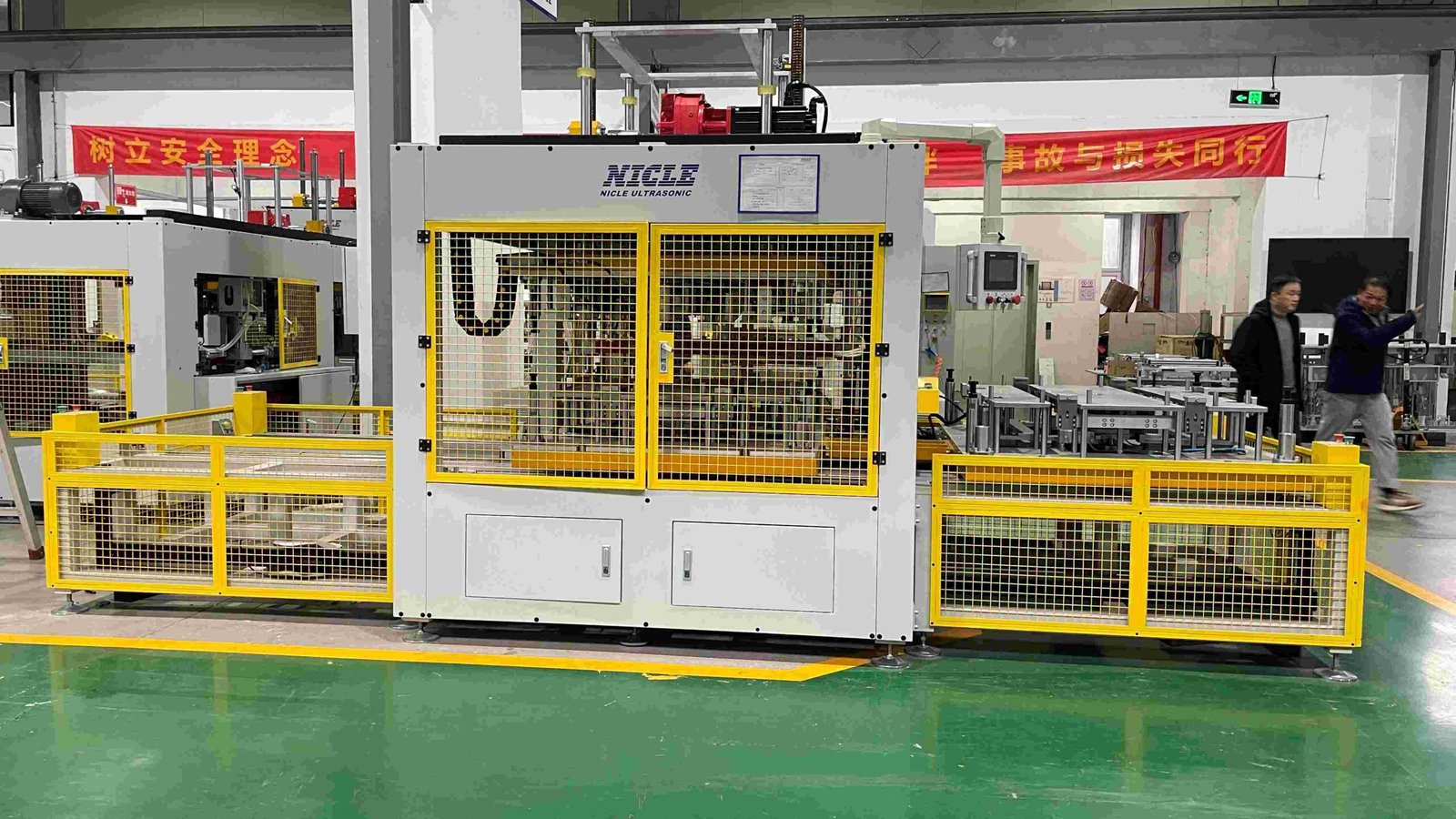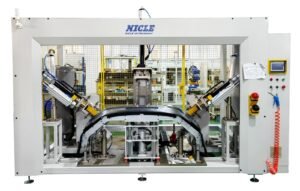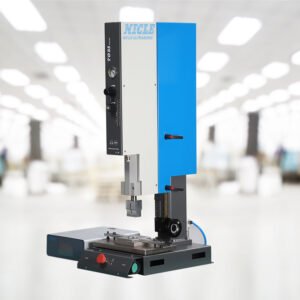Hot plate welding machines excel in bonding large, thick plastic parts like dashboard panels and bumper assemblies. This process involves three phases: first, the heated platen (typically 200°C–300°C with ±5°C precision) simultaneously softens both workpieces’ mating surfaces; then, the platen retracts allowing immediate part contact under controlled pressure (15-40 N/cm²); finally, cooling under pressure forms crystalline structures for optimal strength. Volkswagen’s ID.4 production line utilizes robotic hot plate welders with infrared thermography to ensure zero-defect bonding for its 1.8-meter-long battery enclosures. Key advantages include:
Material Versatility: Works with PP, PE, ABS, and glass-filled thermoplastics up to 60% filler content.
Repeatability: Bosch’s Industry 4.0-enabled systems achieve 99.98% process stability in high-volume production.
Low Porosity: Creates airtight seals for EV coolant reservoirs with <0.01% leak rate in pressure testing.
Industry Tip: Modern machines like Branson’s GHX-100 feature multi-zone CNC temperature profiles, adapting to complex geometries like multi-curved fender joints.
Ultrasonic Welding Machine: Speed and Precision for Delicate Parts
Ultrasonic welding machines employ piezoelectric converters to generate 20–40 kHz vibrations, creating interfacial friction that melts thin plastic components within 0.2-3 seconds. The process is particularly effective for assemblies requiring cosmetic perfection, such as touch-sensitive control panels or millimeter-wave radar housings where adhesive outgassing could interfere with sensors. Ford’s latest F-150 lighting modules use hermetic ultrasonic welding to prevent condensation in LED arrays. Benefits include:
No Consumables: Eliminates VOC-emitting adhesives, meeting EPA Tier 4 emission standards.
Energy Efficiency: Consumes 85% less power than hot plate welding per joint (Siemens lifecycle assessment data).
Micro-Welding Capability: Dukane’s iQ Series can bond 0.3mm thick PC/ABS blends for ADAS camera mounts without warpage.
Application Spotlight: Tesla’s gigacasting strategy integrates 48 ultrasonic welding points per Model Y door panel, reducing weight by 1.2kg versus adhesive bonding.
Vibration Welding Machine: Durability for Structural Parts
Vibration welding machines generate 100-300 Hz linear oscillations at 1-5mm amplitude under 2-10MPa pressure, ideal for welding semi-crystalline materials like nylon air intake manifolds. The process’s forgiving nature makes it indispensable for underhood components where dimensional variations from thermal expansion must be accommodated. Stellantis’ recent implementation of servo-driven vibration welders cut warranty claims for HVAC duct leaks by 40%. Key features:
High Shear Strength: Joints withstand 120% of base material strength in SAE J2749 vibration tests.
Tolerance Compensation: KUKA’s FlexWeld system handles ±1.5mm dimensional variations in recycled PP parts.
Eco-Friendly: Zero VOC emissions compared to polyurethane adhesive bonding processes.
Case Study: Toyota’s bZ4X battery case production achieved 22-second cycle times using dual-station vibration welders with real-time melt front monitoring.
Choosing the Right Welding Technology
Pro Tip: BMW’s CLAR platform combines ultrasonic welding for mirror housings (cosmetic) with vibration welding for door modules (structural), achieving 360% faster throughput versus single-process lines.
Future Trends in Automotive Plastic Welding
The shift to BEV architectures is driving three innovations: First, laser-assisted hybrid welding now enables 0.1mm precision for transparent polycarbonate lidar housings. Second, 5G-connected welders like Emerson’s AdaptiveSync series use digital twins to predict horn wear before amplitude drops occur. Most notably, BMW’s Leipzig plant has deployed AI-powered ultrasonic welders that automatically compensate for recycled material variability, reducing scrap rates from 5% to 0.8% on door card production. The upcoming ISO 18594:2024 standard will mandate real-time weld energy monitoring for all structural plastic joints in crash zones.




